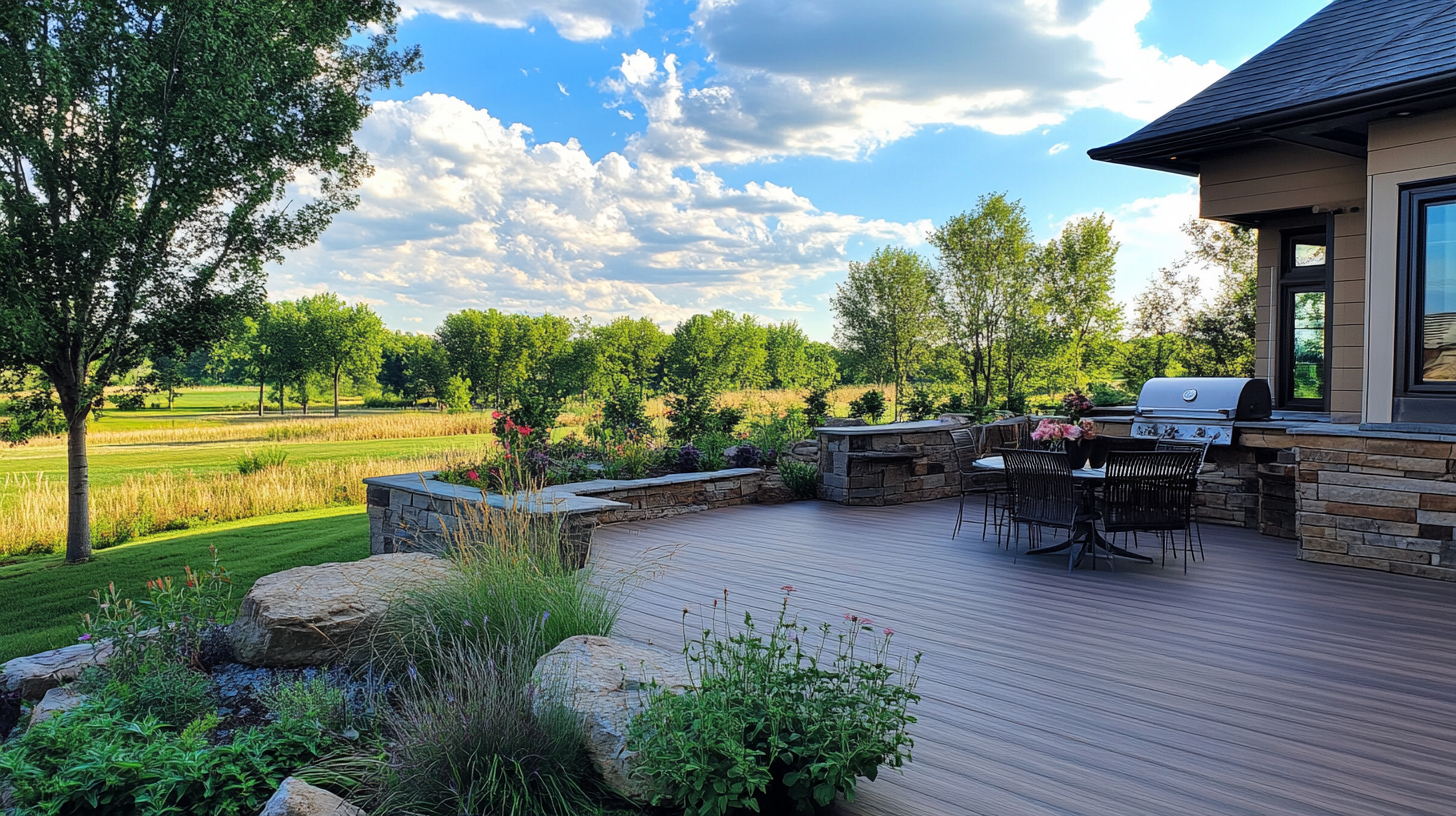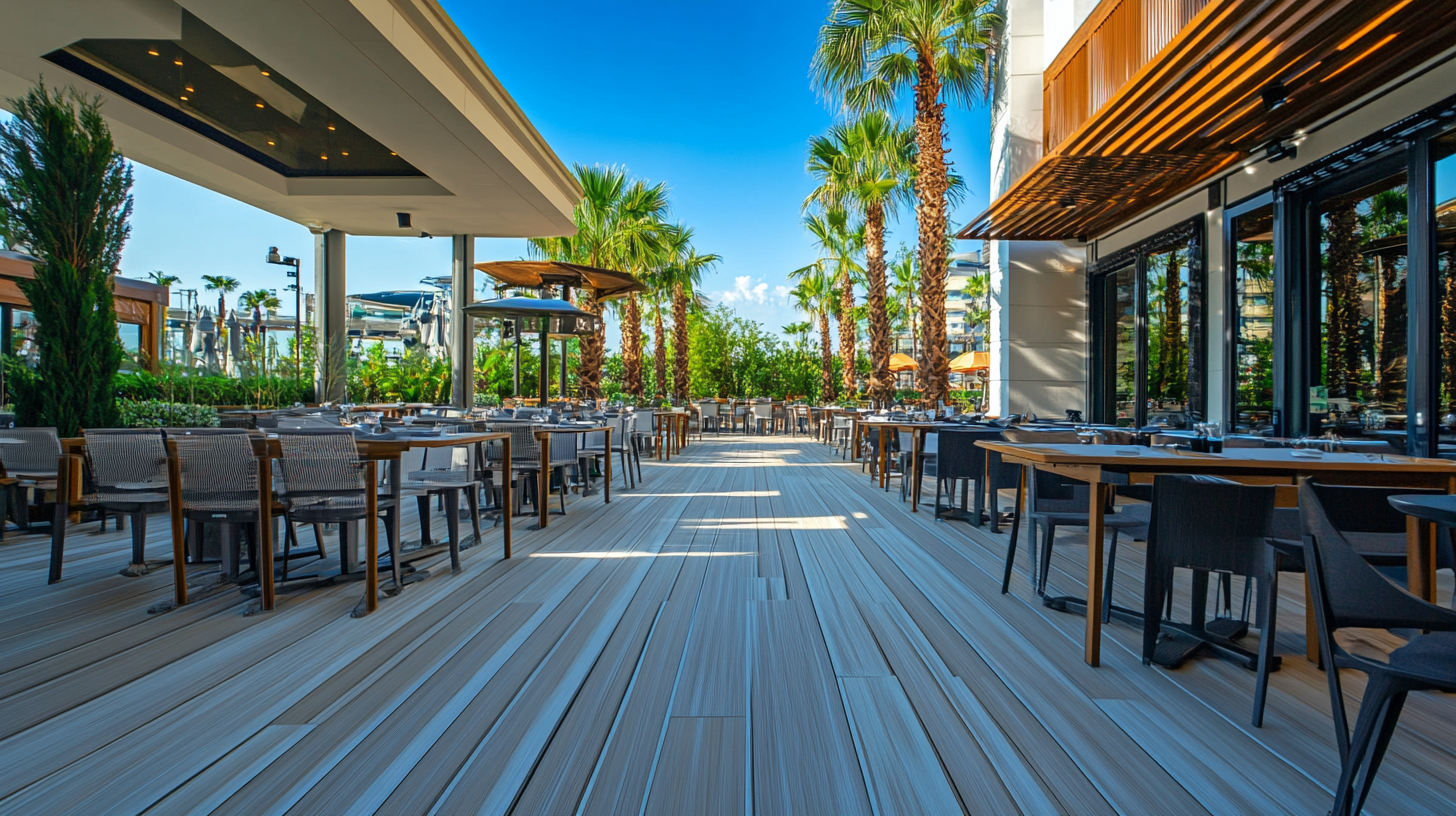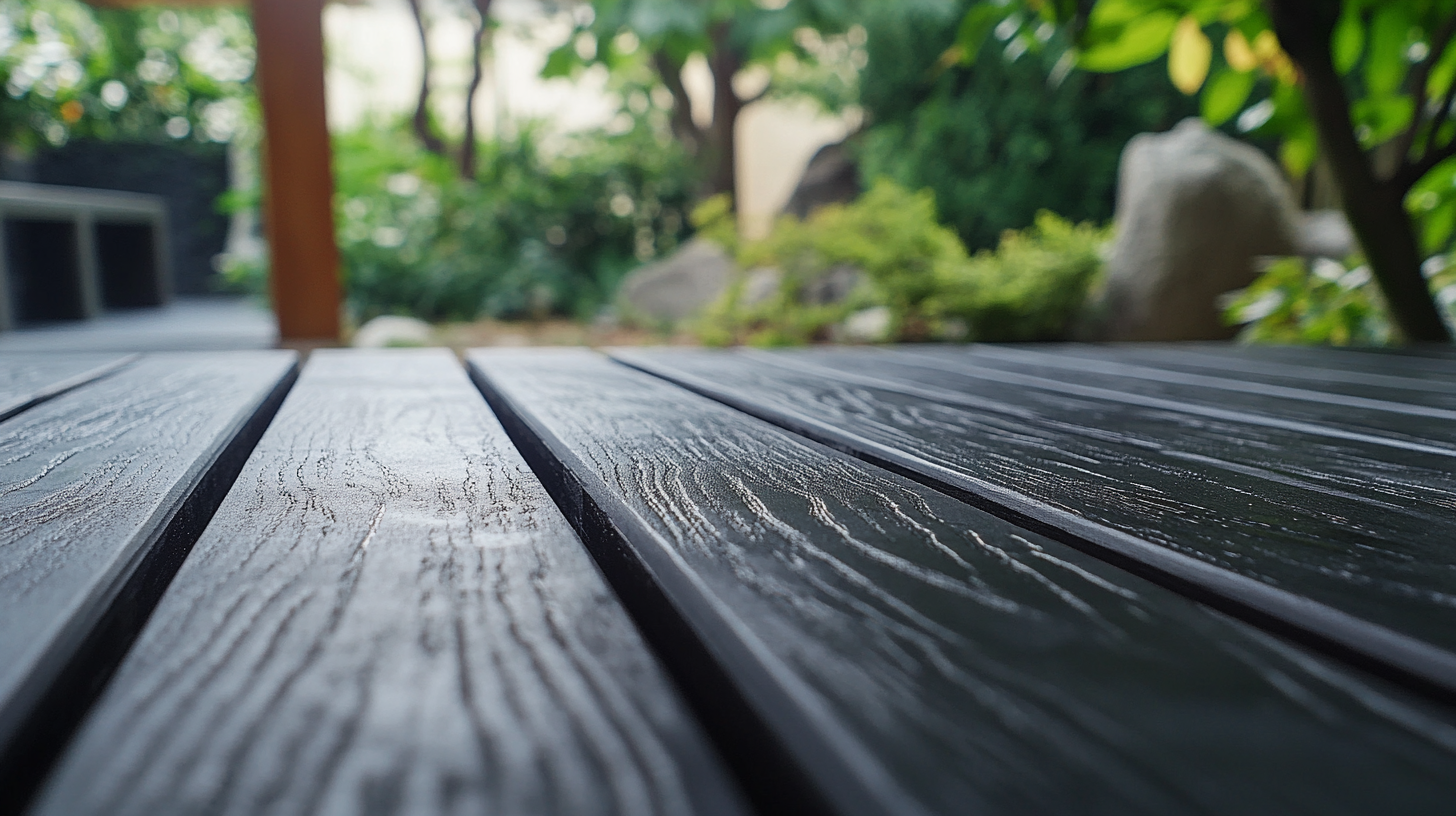Shandong Xiangying New Materials Technology Co., Ltd.
Shandong Xiangying New Materials Technology Co., Ltd.
In recent years, WPC outdoor solutions have emerged as a leading choice for homeowners and landscapers seeking to enhance their outdoor spaces while prioritizing durability and aesthetics. According to a report by MarketsandMarkets, the global wood-plastic composite market is expected to reach USD 9.3 billion by 2027, growing at a CAGR of 10.5%. This significant growth can be attributed to the rising demand for sustainable and low-maintenance alternatives to traditional wood, which often succumbs to weather damage and rot. WPC materials, which combine the natural beauty of wood with the resilience of plastic, are becoming increasingly popular for decks, fences, and patios. Additionally, a study by Grand View Research highlights that WPC outdoor applications are not only environmentally friendly but also provide long-lasting performance, making them an ideal choice for consumers looking to maximize both durability and design in their outdoor settings.

When it comes to enhancing outdoor spaces, Wood Plastic Composite (WPC) solutions stand out for their exceptional durability and aesthetic appeal. WPC is a composite material made from a blend of wood fibers and plastic, which results in a product that is not only resilient to harsh weather conditions but also visually pleasing. This makes it an ideal choice for decking, fencing, and outdoor furniture that need to withstand the test of time while maintaining a stylish appearance.
One of the primary benefits of WPC is its low maintenance requirements compared to traditional wood. Homeowners can enjoy the beauty of wood-like surfaces without the ongoing hassle of sanding, staining, or sealing. Moreover, WPC is resistant to fading, warping, and splintering, ensuring that your outdoor space retains its vibrant look year after year. Whether you’re creating a serene garden retreat or a bustling entertainment area, the versatility of WPC allows for a wide range of design options, enabling you to achieve the desired aesthetic without compromising durability.
When considering outdoor spaces, the choice of materials can significantly impact both durability and aesthetics. Wood-Plastic Composite (WPC) has emerged as a popular solution due to its unique composition that combines the best attributes of wood and plastic. Composed of a blend of recycled wood fibers and thermoplastics, WPC offers impressive performance metrics, such as resistance to rot, mold, and UV damage, making it ideal for outdoor decks, furniture, and fences.
**Tips:** When selecting WPC materials, be sure to check the manufacturer's specifications for moisture resistance and color stability. This ensures that your outdoor spaces not only look great but also withstand the test of time.
Another advantage of WPC is its low maintenance requirements compared to traditional wood. Unlike wood that requires regular staining or sealing, WPC can be easily cleaned with soap and water, retaining its aesthetic appeal.
**Tips:** For optimal longevity, consider using WPC products that come with warranties. This investment not only assures you of their durability but also provides peace of mind when enhancing your outdoor living experience.
When considering outdoor spaces, the choice of materials plays a crucial role not only in aesthetics but also in long-term savings. Wood Plastic Composite (WPC) has emerged as a sustainable alternative to traditional materials like wood and concrete. By comparing the longevity and maintenance costs of WPC with conventional options, it becomes evident that investing in WPC can lead to significant cost savings in the long run. Traditional materials often require regular upkeep, such as staining or sealing, which can add up over time, while WPC offers a lower maintenance solution without sacrificing beauty.
Additionally, WPC solutions provide unique advantages that can distinguish outdoor spaces. With a variety of styles and colors available, homeowners can create stunning environments that reflect personal aesthetics while benefiting from the durability and resistance to weather conditions offered by WPC. This dual advantage not only enhances the visual appeal of outdoor areas but also ensures that they stand the test of time, making WPC a pragmatic choice for any outdoor project. In the competitive landscape of landscaping materials, leveraging the unique qualities of WPC can contribute to the overall success and functionality of outdoor spaces.
This pie chart illustrates the comparative distribution of different outdoor materials in terms of their durability and aesthetics. WPC materials lead with a significant share, highlighting their advantages over traditional wood and other materials.
The shift towards sustainable outdoor design has never been more critical, and Wood-Plastic Composite (WPC) solutions are at the forefront of this movement. WPC is engineered from a blend of recycled wood fibers and thermoplastics, making it a robust alternative that minimizes environmental impact. According to the American Wood Council, using recycled wood in WPC can significantly reduce deforestation and waste; for every ton of recycled wood, about 2.5 tons of greenhouse gas emissions are avoided. This sustainable approach not only protects trees but also contributes to a circular economy that promotes resource efficiency.
Incorporating WPC into your outdoor spaces isn't just eco-friendly; it also offers durability and low maintenance, which are essential for modern designs. WPC products are resistant to rot, moisture, and insects, ensuring longevity in various weather conditions. Tips for maximizing effectiveness include selecting WPC with a high recycled material content and opting for manufacturers who prioritize sustainable sourcing practices. This way, you can ensure your outdoor space remains beautiful and functional for years to come.
When designing, consider the aesthetic versatility of WPC, which can mimic the appearance of natural wood while providing enhanced durability. For best results, pair WPC decking and furniture with native plants that require minimal irrigation, further reducing resource consumption. By making thoughtful choices in materials and design, you can create an inviting outdoor space that champions sustainability and showcases your commitment to environmental stewardship.

The use of Wood-Plastic Composites (WPC) in landscaping and decking is rapidly gaining popularity due to their ability to blend durability with aesthetic appeal. A recent report by MarketsandMarkets indicates that the WPC market is projected to reach $7.6 billion by 2026, with an increasing number of homeowners recognizing the benefits of integrating WPC into their outdoor spaces. From decking systems to garden structures, WPC allows for innovative designs that withstand harsh weather conditions while maintaining a beautiful appearance.
When utilizing WPC in your outdoor space, consider incorporating creative elements such as mixed-material pathways or lounge areas that combine traditional wood and WPC. This not only enhances visual interest but also provides practical benefits, as WPC is resistant to fading, rotting, and insect damage. As reported by the North American Deck and Railing Association, 40% of homeowners are choosing WPC for their decks, citing its low maintenance and long-lasting appeal.
**Tips:**
1. To ensure optimal aesthetics, choose colors and textures of WPC that complement your home and garden. Consider contrasting or matching them with existing materials for a cohesive look.
2. Incorporate WPC in elevated garden beds or vertical planters to create dynamic landscaping features that are both functional and attractive.
3. For outdoor seating areas, use WPC furniture that is not only stylish but also resistant to the elements, ensuring comfort and durability for years to come.

